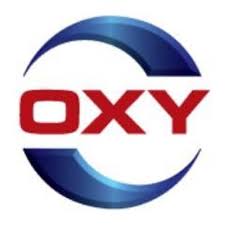西方石油公司 (OXY.US) 2025年第二季度业绩电话会
文章语言:
简
繁
EN
Share
Minutes
原文
会议摘要
The dialogue highlights Occidental Petroleum's financial performance with strong cash flow, significant cost reductions, and strategic initiatives in carbon capture and enhanced oil recovery. The company reported $2.6 billion in operating cash flow, achieved through operational efficiencies, and completed $950 million in additional divestitures, totaling nearly $4 billion since January 2024. Key strategic areas include the Stratos project, carbon capture technologies, and EOR, aiming to optimize capital allocation, reduce costs, and achieve energy independence. The company expects cash tax benefits of $700-$800 million, with a focus on deleveraging and improving its balance sheet for long-term shareholder value.
会议速览
The meeting reviewed the strong performance of the company in the second quarter of 2025, including $260 million in operating cash flow and significant progress in debt repayment. Despite the drop in oil prices, the company optimized its asset portfolio, accelerated debt repayment, and initiated a carbon capture project, demonstrating the company's dual commitment to environmental protection and economic benefits.
The oil and gas business exceeded production targets in the second quarter, thanks to the team's operational strength and diversified investment portfolio, especially with outstanding performance in the Rocky Mountains and Oman region. Despite the drop in oil prices, significant increase in cash flow was achieved due to effective cost control and improved production efficiency. By utilizing automation, sensor technology, and artificial intelligence, the optimization of cost structure was achieved, particularly in onshore and international operations in the United States, effectively reducing operating costs. Furthermore, through technological improvements and increased capital efficiency, the company achieved outstanding well performance and economic benefits in areas such as the Permian Basin and the Gulf of Mexico.
The midstream and marketing departments of Oxy Energy Company have shown outstanding performance in the latest quarter, mainly benefiting from the increase in crude oil marketing profits, optimization of natural gas marketing, and rise in sulfur prices. The company also benefited from new oil transportation contracts and made significant progress in low carbon projects, such as the completion of key milestones in the Stratos project and the start of the wet commissioning phase. In addition, Oxy Energy demonstrated strong demand in the carbon capture and removal technology market through the signing of carbon removal sales agreements. The company also announced a potential joint venture with XRD to evaluate the development of direct air capture facilities in southern Texas, as well as further highlighting its unique capabilities in the field of carbon capture and removal technology through the support of the U.S. Department of Energy. Oxy Energy Company also strengthened its financial position by selling non-core assets to accelerate debt repayment, laying a solid foundation for future growth.
In the second quarter, the company achieved an adjusted earnings per share of 39 cents and a reported net profit of 26 cents, demonstrating its financial health and profitability.
The company achieved approximately $700 million in free cash flow through optimizing operations, capital efficiency, and proactive market adjustments. Despite the decline in oil prices and market volatility, the company has maintained strong financial performance, partly benefiting from investment gains and market value adjustments. The company adjusted production guidance, expecting an increase in production in the second half of the year, but constrained by the decrease in production in the Gulf of Mexico. The revenue of the chemical sector fell below expectations, affected by weak global and domestic market demand. The company raised its full-year guidance for the midstream and marketing departments, expecting a more moderate performance in the third quarter.
It is expected that capital expenditures will tilt towards the third quarter of 2025 due to arrangements for oil recovery and expansion projects. By improving operational efficiency, the company has reduced its capital guidance range by $100 million and achieved cost savings of $50 million in international asset operations. Recent legislation has brought the company approximately $700 million to $800 million in future tax relief over the next two years, mainly due to adjustments in depreciation and R&D expense policies. Since the first quarter of last year, the company has successfully sold nearly $40 billion in assets, achieving debt reduction goals ahead of schedule. In the past 13 months, $7.5 billion in debt has been repaid, significantly reducing annual interest expenses and optimizing the debt structure beyond the original plan.
The conversation discussed the advantages of Oxy Energy Company's upstream asset portfolio, including high-quality short-term high-return non-traditional assets and low-declining traditional oil reserves, as well as the company's core competencies. In addition, the impact of tax benefits on cash taxes in 2025 and 2026 was mentioned, which is expected to increase deferred tax expenses but will not affect the effective tax rate.
Discussed the oil extraction contract signed with Oman, emphasizing a win-win cooperation model for both parties. Mentioned that 640 million barrels of oil have been produced over the past 10 years, showcasing the transformation of the project from steam drive oil extraction to multi-layer extraction, as well as a low-cost, multi-option sustainable development strategy. It was highlighted that investments will gradually be reflected in financial statements, emphasizing the long-term benefits of the project for investors and the government.
Discussions were held on recent non-core asset sales, especially the sales to Enterprise. Possible future scales of non-core asset sales were proposed, including cleaning and selling low-value scattered real estate to enhance cash flow and reduce debt. It was mentioned that the team is currently organizing assets for sale, emphasizing the importance of asset sales to financial strategy.
Discussed the strategic shift in focus towards point source capture opportunities in the carbon business, particularly in relation to enhancing carbon dioxide utilization for enhanced oil recovery, and the impact of future capital expenditures on potential tax savings on cash flow.
The conversation discussed the future production capacity trends of the Gulf of Mexico in the coming years, especially with the implementation of the 'Gulf of Mexico 2.0' project, which is expected to lead to steady growth in production. It mentioned the role of hydraulic fracturing projects in reducing average extraction costs and increasing stable production rates, as well as the increase in production capacity after the eastern facilities were renovated. Additionally, the high EUR (Estimated Ultimate Recovery) of new wells in the central region and the recent improvement in equipment reliability indicate a significant enhancement in production potential.
Discussions were held on the capital expenditure plan for the year 2026, which includes a $3 million reduction in oxygen expenses and a $2.5 million reduction in LCB5, as well as cost savings achieved through improving drilling efficiency and completing segmented operations. The team is working hard to optimize activity levels to maintain efficiency and may redirect capital towards low-decline, high-margin water flooding projects.
The dialogue discussed the challenges faced by the oil and gas production in the Gulf region and the corresponding strategies, including addressing pipeline constraints, optimizing pump operations, and planning future production. Through team collaboration and technological improvements, it is expected that stable production growth will be achieved in 2026 and 2027, with a focus on improving efficiency and planning.
Discussed operational optimization strategies, planning to conduct a major overhaul every two years, using multiple synchronized plans, including the reallocation of internal and external resources and long-term cooperation with suppliers. It is expected to be implemented starting from next year, and detailed plans will be disclosed in the future.
The dialogue discussed the application of AI technology in the oil industry, especially its potential in complex geological conditions, and its impact on industry transformation and production efficiency improvement. It emphasized the role of AI in underground resource development in the Gulf of Mexico, onshore in the United States, and in improving operational efficiency, demonstrating the investment and expected results of AI technology, and showcasing its broad prospects in the industry.
The discussion focused on predicting the peak of US oil production, emphasizing the importance of CO2EOR technology in improving oil recovery rates and extending energy independence. The goal is to develop 50 to 70 billion barrels of oil using this technology in the next five to ten years, which is expected to extend US energy independence by ten years, maintaining a competitive advantage in global affairs.
The conversation explored whether the current level of activity is restricted by capital or other factors, and how changes in contracts can enhance the project's competitiveness, suggesting that capital is not the only constraint and that contract improvements will enhance the attractiveness of the project.
Against the backdrop of current market oversupply, the company has decided to temporarily slow down its expansion pace and instead focus on reducing debt levels and operating costs, and strengthening capital efficiency. Each asset team is actively seeking ways to reduce costs in order to maintain profitability and long-term sustainability throughout the industry cycle. In particular, in the US region and the Block53 project, the company is gradually achieving dual improvements in capital and operational efficiency through optimizing drilling costs and improving operational efficiency, aiming for higher returns in the carbon dioxide project. Future capital investments in Oman will be adjusted according to market conditions.
The dialogue discusses the application of intelligent technology, supply chain optimization, and partnership relationships in oil and gas enterprises to achieve efficient operation of assets and sustainable growth. The enterprises emphasize that after restoring the balance sheet, they will moderately increase production based on their value proposition, while ensuring the implementation of long-term plans through capital allocation strategies. In addition, by diversifying asset portfolios and utilizing low-cost options, the enterprises demonstrate flexibility and potential to address future challenges.
The conversation revolves around the supply and demand situation in the chemical industry and future cash flow forecasts. It mentions the impact of China's overcapacity on PVC and caustic soda export prices, as well as the potential mitigating effect of capacity reductions in Europe and the United States. At the same time, it discusses changes in oil and gas production in the Permian Basin, including the reasons for the decrease in oil product proportion and the increase in gas and NGL recovery rates, as well as expectations for future production trends in the next six months.
The conversation discussed the shale oil producing areas in the United States, especially the Permian and Rockies regions, where production is expected to increase in the second half of the year, thanks to optimized well placement, improved drilling and completion efficiency, and the reuse of infrastructure. In terms of water treatment issues, the discussion pointed out that reducing water production through optimized well placement, strengthening cooperation with water treatment partners, and adopting advanced water recycling technologies can effectively lower water treatment costs. These measures are crucial for maintaining cost structure in future secondary reservoir development with high water production.
Discussed the economic feasibility of shale EOR projects under the current crude oil prices, combined with the 45Q tax incentives, with a focus on analyzing the constraints of CO2 supply. Introduced strategies to increase CO2 supply through direct air capture and point source capture, as well as plans to implement projects in Texas and Oman. Mentioned the preparation for the second DAC facility in South Texas, including strategies for government subsidies, technology innovation cooperation, and pre-signing sales contracts.
要点回答
Q:What was the operating cash flow for the second quarter of 2025 and how does it compare to the first half of 2024?
A:The operating cash flow for the second quarter of 2025 was $2.6 billion, which helped to generate more cash flow in the first half of 2025 than in the same period in 2024, despite much lower oil prices.
Q:How much debt was repaid in less than a year following the Crown Rock acquisition, and what does this equate to?
A:The company repaid $7.5 billion of debt in less than a year from closing the Crown Rock acquisition, which equates to almost a 70% reduction of the debt raised for the acquisition.
Q:What is the significance of the milestone mentioned by the CEO in relation to Stratos?
A:The CEO mentioned that Stratos has achieved a significant milestone, with the commencement of wet commissioning and on track to start capturing CO2 this year. This timing is perfect as there is growing momentum behind direct air capture to generate meaningful value from CO2.
Q:How much did the oil and gas business produce per day in the second quarter, and what factors contributed to this production?
A:The oil and gas business produced 1.4 million boe per day in the second quarter, exceeding the midpoint of production guidance, due to operational strength, a diverse portfolio, and outperformance in the Rockies and uplift to Oman volumes.
Q:What operational cost reductions were achieved despite higher production levels?
A:Despite higher production, the operational cost reductions were achieved through the operational strength of teams, cost reductions, and structural cost savings, resulting in a meaningful reduction of per barrel cost to 8 dollars 55 cents.
Q:How has the well cost reduction in the Permian impacted the company's capital guidance?
A:The well cost reduction in the Permian has led to a reduction of the midpoint of the company's capital guidance by an additional $100 million this quarter.
Q:What notable achievements were highlighted in the Gulf of America?
A:Two standout wells in the Gulf of America were highlighted, with one of the best production outcomes at Horn Mountain in 22 years and the best at Caesar Tonga in 13 years. These achievements are attributed to subsurface engineering and the resource potential across existing fields.
Q:How is the midstream and marketing segment performing, and what factors contributed to its performance in the quarter?
A:The midstream and marketing segment had another impressive quarter with positive earnings on an adjusted basis and outperforming the high end of guidance. This was largely due to improved crude marketing margins, gas marketing optimization, and higher sulfur pricing.
Q:What is the status of Stratos' operations and what recent agreements have been signed?
A:Stratos has achieved a significant milestone with Trains one and two, and is on track to start capturing CO2 with wet commissioning commenced. The company signed two additional commercial agreements for carbon dioxide removal sales with JP Morgan and Palo Alto Networks, and announced an agreement to evaluate a potential joint venture to develop a DAC facility in South Texas with Xrd.
Q:What are the provisions included in the 'one big beautiful bill' that will benefit Oxy?
A:The 'one big beautiful bill' includes provisions that extend and expand the 45Q credit, recognizing the need to capture CO2 for enhanced oil recovery and energy security.
Q:How will carbon capture and enhanced oil recovery contribute to U.S. energy independence?
A:Captured CO2 can be used for enhanced oil recovery in conventional land shell reservoirs, potentially recovering an additional 50 to 70 billion barrels of oil in the United States, which could extend energy independence by 10 years.
Q:What advantages does Oxy have in providing solutions related to carbon capture and energy markets?
A:Oxy has leadership in DAC technology, sequestration and EOR operations, over 50 years of experience in carbon management, 3 billion barrels of Permian EOR conventional resources, extensive CO2 infrastructure in the Permian, an unconventional resource base, and well-positioned sequestration hubs, making it uniquely positioned to support lower emission strategies and energy security.
Q:What recent successes have been made in Oxy's portfolio high-grading efforts?
A:Since the end of the first quarter, Oxy announced $950 million of additional divestitures of noncore, non-operated assets, bringing the total announced divestitures to nearly $4 billion since January 2024. This has helped accelerate debt repayments, improve the balance sheet, and strengthen the portfolio by divesting assets with limited near-term opportunities.
Q:How was the financial performance in the second quarter, and what factors contributed to it?
A:In the second quarter, Oxy generated an adjusted profit of 39 cents per diluted share and a reported profit of 26 cents per share. Investment income, positive mark-to-market adjustments, strong operational performance, and a focus on capital efficiencies enabled approximately $700 million in free cash flow before working capital, despite lower realized oil prices and market volatility.
Q:What is the expected production range for the third quarter, and what factors influence it?
A:The expected total company production range for the third quarter is 1.42 to 1.46 million Boe per day, influenced by sustained operational momentum and higher volumes in all main operating areas, with a reduction expected in Gulf of America production due to recent curtailments and program timing shifts.
Q:How did the midstream and marketing segment perform in the second quarter, and what are the updated guidance figures?
A:The midstream and marketing segment performed exceptionally well in the second quarter, generating positive earnings on an adjusted basis of approximately $206 million. This was driven by enhanced crude marketing and other factors, and guidance for the segment has been raised by $85 million. For the third quarter, a more muted performance is expected, while the full-year guidance has been lowered to a range of $800 to $900 million.
Q:What is the updated capital program expectation for 2025, and how does it affect production?
A:The remaining 2025 capital spend is expected to be weighted more to the third quarter, and the 2025 capital guidance range has been reduced by $100 million, to $500 million in total reductions from the original plan, without impacting total company production.
Q:What tax benefits does Oxy expect from the passing of the 'one big beautiful bill'?
A:Oxy expects a potential reduction of 700 to 800 million in cash taxes based on a preliminary assessment, with roughly 35% expected in 2025 and the remainder in 2026. These benefits are primarily due to changes in bonus depreciation, R&D expensing, and limitations on interest deductibility.
Q:What is the update on the company's divestiture efforts and their impact on the financial position?
A:The company has made progress in its divestiture program, having announced additional divestitures of $950 million since the end of the first quarter of 2024, with $370 million closed and expected to close the remaining $580 million in the third quarter. This brings the total announced divestitures to nearly $4 billion since the first quarter of 2024. These divestitures, along with warrant proceeds and strong free cash flow, have allowed the company to exceed its debt reduction targets and repay approximately $7.5 billion of debt, resulting in a more manageable debt maturity profile and a reduction in annual interest expense by about $410 million.
Q:How will the cash tax benefit of $700 to 800 million impact the cash tax rate in 2025 and 2026?
A:The cash tax benefit of $700 to 800 million will result in a 35% benefit in 2025 and the balance in 2026. The adjusted income effective tax rate will not be impacted by the cash tax benefit, but there will be an increased deferred tax expense, primarily driven by the acceleration of depreciation and research and development expenses for cash tax purposes.
Q:What are the free cash implications of the new agreement with Oman?
A:The new agreement with Oman is expected to have significant cost recovery benefits and provide flexibility for investment, as the economics will be comparable for both Oxy and Oman. While specific numbers cannot be provided, the capital and expenses associated with the agreement, considering the company's equity interest, will contribute to the overall numbers expected for the company. The production profile and the mix of assets, including areas with stacked pay and low-cost infrastructure, are anticipated to be sustainable and beneficial for both parties.
Q:Can the company expect to sell additional non-core assets to support its financial goals?
A:The company has scattered acreage that it plans to sell as it needs to be cleaned up and accumulated. While this is not expected to generate large dollar amounts, the team is working on identifying and preparing these assets for sale. The company is also considering potential sales of non-core assets to further support its free cash flow and deleveraging objectives, although the exact scale and timeline of these sales are not specified.
Q:What is the potential shift in focus within the carbon business?
A:The company has maintained an interest in point source capture for the carbon business, which has been a driving force behind their efforts to develop and improve direct air capture technology. This indicates a strategic focus on potentially more point source opportunities for enhanced oil recovery (EOR) purposes.
Q:What challenges did the company face with point source capture of carbon and what potential developments are being considered?
A:The company faced the challenge of low carbon credits for point source capture which made it difficult to convince any industry to participate. They are now looking at enhanced oil recovery with parity for CO2. They are still working on point source capture and considering getting CO2 from within pipelines to the Permian.
Q:How does natural gas power generation support the company's CO2 capture efforts?
A:Natural gas power generation, especially in places like the Permian, provides a link for power supply and a source of CO2 which can be incorporated into installations for carbon capture.
Q:What factors will influence cash tax savings beyond 2027?
A:Cash tax savings beyond 2027 will depend on the company's capital trajectory, the proportion of domestic spending, and the mix of assets qualifying for 100% bonus depreciation, influenced by projects like the battlefield expansion that will come online next year.
Q:What are the expectations for production capacity in the Gulf of Mexico over a multiyear period?
A:Production capacity in the Gulf of Mexico is expected to be supported by water floods which will lead to flat, low-cost, and steady barrels. Many projects are lined up for the company's facilities, with modifications increasing capacity and wells with large eurs contributing to production. The combination of subsurface engineering and technology advancements position the company well for a production ramp-up.
Q:How is the company anticipating to manage and possibly reduce spending in 2026?
A:The company anticipates a 300 million reduction in ONGCF spend and a 250 million reduction in LCB spend in 2026, along with operational efficiencies. These savings could create opportunities for capital allocation. The company is also focused on optimizing activity levels for efficiency and reducing nonproductive time while increasing pad size.
Q:What is the potential for shifting capital to Gulf of America water flood projects?
A:There is potential to shift capital to lower decline, low F&D, high-margin water flood projects in the Gulf of America.
Q:What is the expected production run rate for the Gulf of America in 2026 and 2027, and how does it bridge the current production gap?
A:The expected production run rate for the Gulf of America in 2026 and 2027 is positive due to the resolution of pipeline constraints, improvements in well results, and operational adjustments. Production is expected to ramp up strongly towards the end of the year as seen in the numbers provided in next year's guidance. The company is in the next phase of operational optimization, planning for turnarounds every two years, and considering the 2026 plan details for the upcoming year.
Q:What are the expectations regarding the use of AI in the oil fields and its potential to change the industry?
A:The expectation is that the use of AI in the oil fields, particularly in the Gulf of Mexico or Gulf of America, could significantly impact the industry by enabling operational efficiencies and driving volume. The company has been building AI capabilities and is optimistic about the potential results from their current project, which they expect to start executing in the next one to two years.
Q:How are the company's teams structured and what areas are they focusing on?
A:The company has structured its teams to focus on specific areas. One team is focused on operations, another in the Gulf of America, and a group is addressing broader challenges such as logistics and supply chain. This structured approach is believed to deliver significant results.
Q:What is the projected future for U.S. oil production and how might it be affected by technological advancements and exploration success?
A:The company believes U.S. oil production could peak between 2027 and 2030. They have modeled this prediction based on current data and have considered unconventional production and Enhanced Oil Recovery (EOR) techniques like CO2 EOR. They estimate that CO2 EOR could extend U.S. energy independence by about 10 years, with the potential to develop an additional 50 to 70 billion barrels of oil.
Q:What role does CO2 play in the company's strategy for oil recovery and how significant is its potential impact?
A:The company's strategy has always involved using CO2 for enhanced oil recovery. CO2 has proven to be highly effective in producing more oil from reservoirs compared to other techniques. They estimate that without CO2 EOR, only 22% of the estimated 1.5 trillion barrels of oil in U.S. reserves would be recoverable. CO2 EOR is expected to increase this recovery rate significantly, hence its critical importance to the company's strategy.
Q:Are there any constraints to the current activity levels in the company's operations, and how is it addressing these?
A:The main constraints to the company's current activity levels are the oversupplied market and the company's capital strategy. Due to the oversupply, there is no incentive for aggressive growth. The company is focused on reducing debt and maintaining production levels with the current activity pace. They are not seeking growth but rather optimizing operations to降低成本结构, which is being pursued across all asset teams, including midstream and chemicals. The company aims to lower costs to enhance profitability and prepare for future investment, including CO2 flooding and potential projects in Oman.
Q:How is the company reducing costs and improving operational efficiency?
A:The company is reducing costs and improving operational efficiency through various means, including optimizing onshore assets, drilling operations, artificial lift equipment, and workover rigs. They are also employing AI to enhance safety and operations. These efforts have led to record low costs per foot for drilling and highest peak daily rates, as well as the best reliability and performance levels. The company is continuing to identify opportunities to further improve efficiency and scale down costs while maintaining or improving safety performance.
Q:What are the company's constraints to scaling up the business in the future, and how will production increases be managed?
A:The scaling up of the company's business in the future would be constrained by its value proposition, which includes maintaining a growing dividend at a moderate pace, reducing debt, and possibly adding share repurchases. Production increases would be managed in a way that aligns with the company's long-term plan, taking into account the diversity of its portfolio, including high-return assets with high decline rates and low-return assets like Oman with lower decline and capital cost projects. Production growth would occur when it fits within this strategic framework and when the timing is appropriate.
Q:What is the strategy for using partnerships in funding projects without using company capital?
A:The company is looking at opportunities to use partnerships as a way of funding projects while not having to dig into their own capital going forward, allowing them to work through various options with very low option costs.
Q:How will the timing of the supply and demand balance affect the future of the 26 market?
A:The future of the 26 market will largely depend on the timing of the supply and demand balance. Currently, global supply and demand for PVC and caustic soda are being impacted by additional Chinese capacity, which burdens export and domestic prices. However, some rationalization of announced capacity in Europe and the U.S. might mitigate this, and the company believes integrated margins between PVC and caustic will close to variable costs, preventing further sustained declines in margins.
Q:What is the outlook for oil cut and production recovery in the Permian region for the second half of the year?
A:The company expects oil cut in the Permian to increase in the second half of the year compared to the first half. They attribute this to a combination of having more secondary benches as part of their portfolio, drilling and completion efficiencies, and the re-use of existing infrastructure which can deliver exceptional returns. These factors are expected to stabilize and increase production in the oil cut in the latter half of 2025.
Q:How is the company addressing water handling and disposal in the Permian Basin, especially with the development of secondary zones?
A:The company has a strategy that includes optimizing well placement to maximize oil recovery rather than water production. This is part of their efforts to maintain a strong well performance. They have partnered with Western Midstream and others to ensure efficient takeaway of the produced water. Additionally, technology advancements in recycling are being highlighted as an important part of the solution to manage water handling costs in the future. They are well-positioned to manage their cost structure and make smart decisions regarding water management.
Q:Is it economically viable to develop shale EOR now, and what are the main constraints?
A:For the company, the viability of developing shale Enhanced Oil Recovery (EOR) is primarily dependent on the availability of CO2, which is why Direct Air Capture (DAC) is critical. Conventional CO2 flooding is currently utilizing much of the available CO2. Despite this, the company believes that shale CO2 development will be economic and is preparing for a project in the Delaware Basin within the next one to two years. They have completed four pilots, calibrated their models, and understand the process will require additional CO2 supply.
Q:What are the thoughts on a second DAC facility in South Texas and the potential for a JV with XTO Energy?
A:The company intends to proceed with a second DAC facility in South Texas and has received a grant for it. The timing for the second facility is not set yet but will incorporate innovations in carbon engineering to ensure it's as efficient as the second phase of the current facility. There is interest from others in participating and in pre-selling credits, as was done with Stratos. However, they will not sign contracts until the front-end engineering and design (FEED) are completed.






